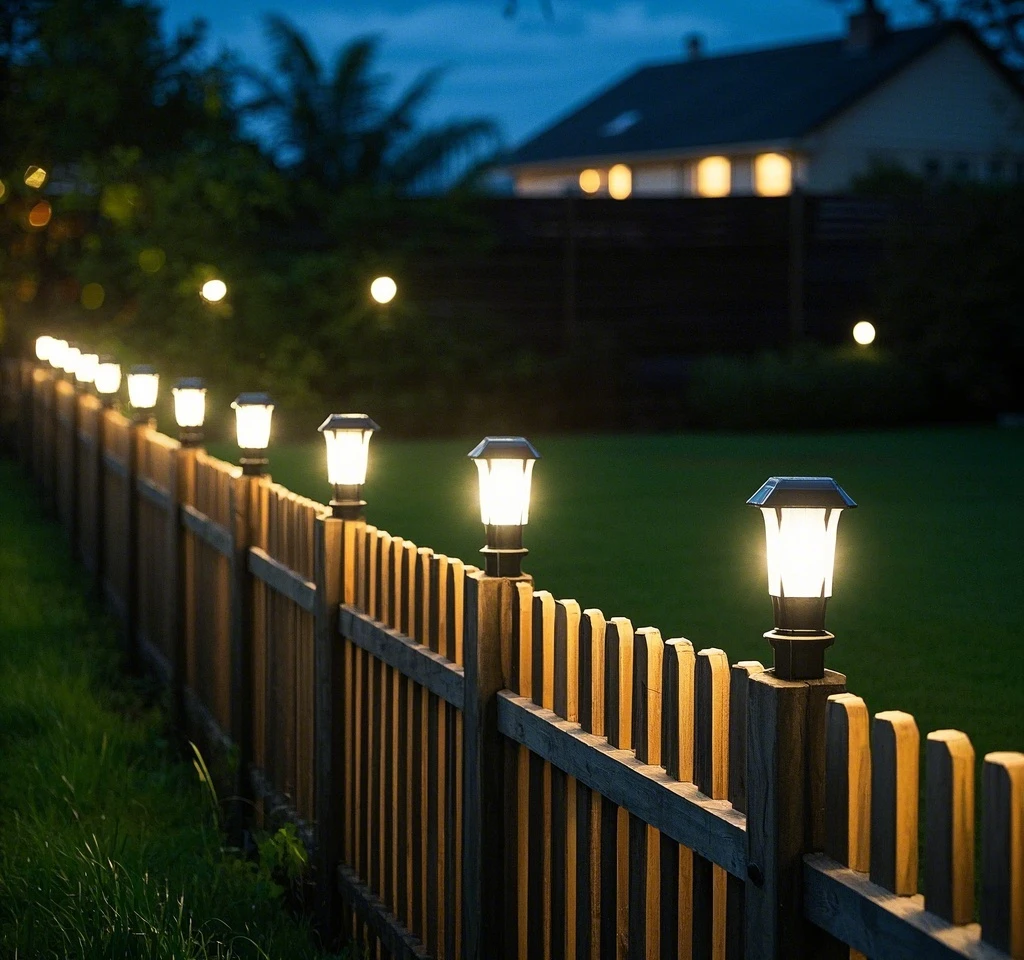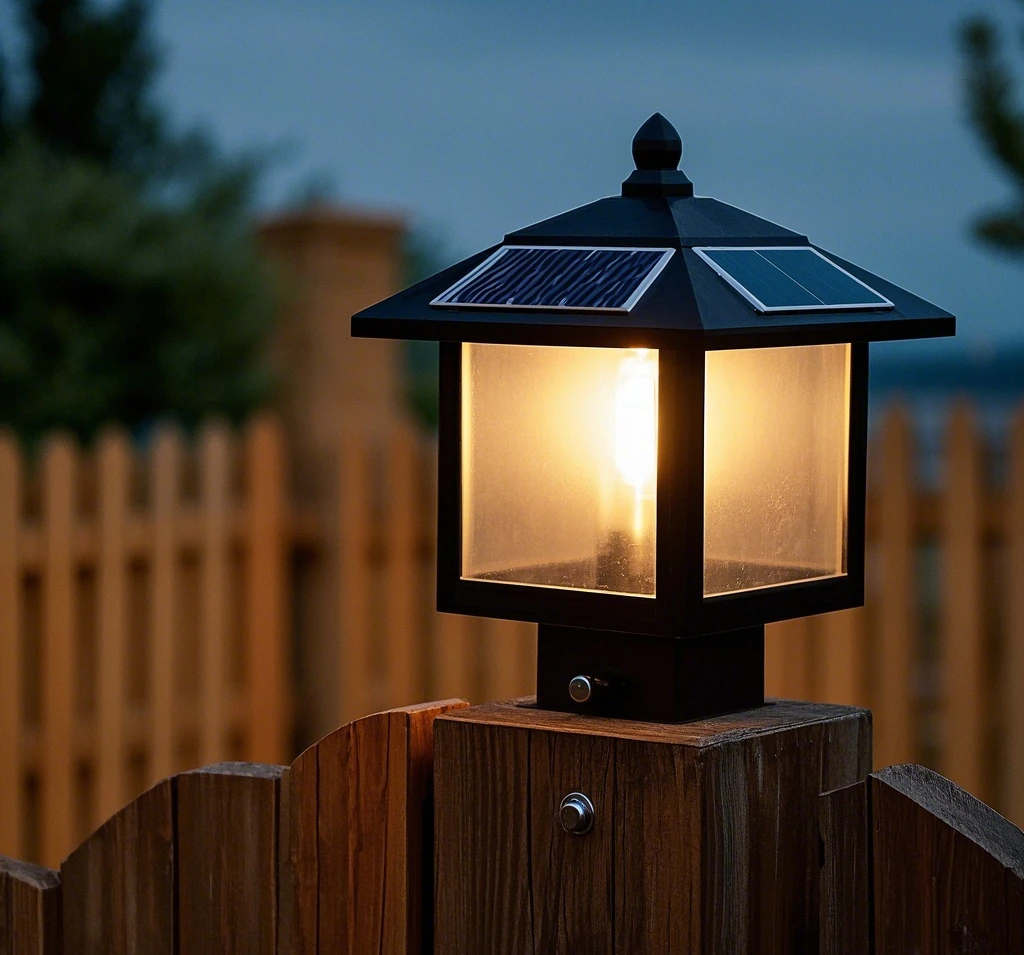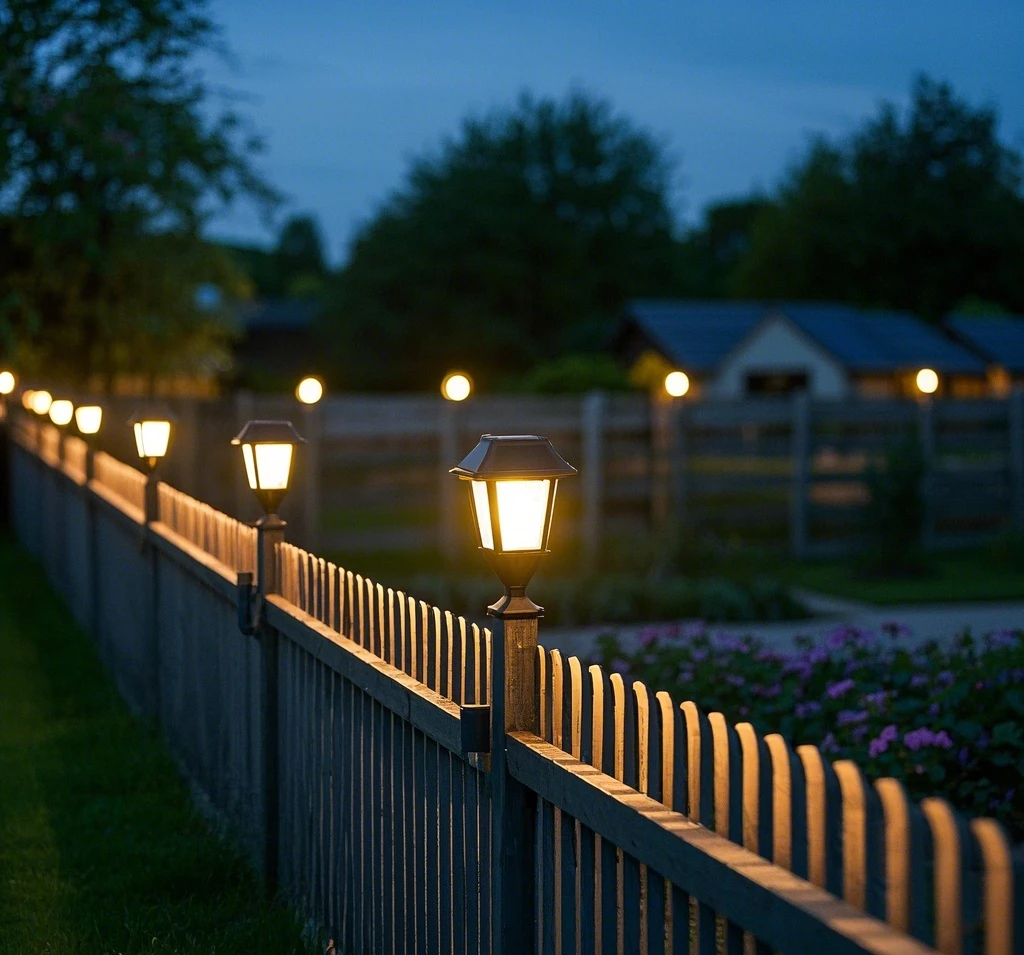Outdoor fence post lights powered by solar energy redefine durability in garden illumination. These fixtures withstand harsh weather, reduce energy costs, and maintain consistent performance. Homeowners increasingly favor them for their longevity and eco-friendly design. The U.S. Department of Energy reports that solar lighting cuts outdoor electricity use by 75% compared to traditional systems. This article explores how outdoor fence post lights ensure lasting performance, focusing on their resilience, technological advancements, and practical benefits, supported by authoritative U.S. data.

Resilience Against Environmental Challenges
Weatherproof Construction
Outdoor fence post lights endure rain, snow, and heat. Manufacturers employ materials like stainless steel and tempered glass. These components resist rust and cracking. The National Renewable Energy Laboratory (NREL) tested solar lights in 2023, finding that IP65-rated models function reliably in temperatures from -20°F to 120°F. Fence posts along gardens or driveways remain illuminated regardless of season. Such durability distinguishes them from fragile incandescent alternatives.
Longevity Under Stress
Lifespan matters in outdoor lighting. Solar fence post lights operate for 10,000 to 15,000 hours. Traditional halogen bulbs rarely exceed 2,000 hours. The Environmental Protection Agency (EPA) notes that durable lighting reduces replacement frequency, cutting waste by 1.5 million tons annually in the U.S. Gardens benefit from fixtures that rarely falter. Performance persists through storms or prolonged sunlight exposure.
UV and Corrosion Resistance
Ultraviolet rays degrade lesser materials. Solar fence post lights feature UV-resistant coatings. Coastal regions test this resilience, where saltwater accelerates corrosion. A 2022 Energy Policy study confirms that advanced polymers in solar lights withstand saline environments. Fence lines near oceans or salted roads stay lit. This durability ensures gardens retain their glow year-round.
Technological Advancements Enhance Efficiency
High-Efficiency Solar Panels
Modern solar panels power fence post lights effectively. Monocrystalline silicon cells achieve 20% efficiency. These panels capture sunlight even in cloudy conditions. A 2024 Solar Energy Journal analysis reports a 35% improvement in energy conversion since 2020. Gardens in northern climates experience reliable illumination. Hawkins. Performance holds steady despite limited daylight hours.
Battery Durability
Lithium-ion batteries store energy for extended use. These units deliver 10-12 hours of light per charge. Cold weather tests battery resilience. Innovations like thermal casings maintain output at -10°F. The Department of Energy’s 2023 Lighting Report highlights a 20% increase in battery lifespan over three years. Fence post lights shine through long winter nights without fail.
Automatic Operation Precision
Light sensors govern functionality. Dusk triggers illumination; dawn shuts it off. This automation conserves energy. A Consumer Reports survey (2023) finds 82% of users value this feature for its reliability. Gardens remain consistently lit without manual effort. Performance aligns with daily cycles seamlessly.
Practical Benefits for Homeowners
Energy Cost Reduction
Solar fence post lights eliminate electricity bills. A typical setup with 10 lights saves 0.15 kWh daily. The U.S. Energy Information Administration estimates outdoor lighting costs households $150 annually. Solar power nullifies this expense. Gardens glow at no operational cost, proving economical over time.

Low Maintenance Design
Minimal upkeep defines these lights. No wiring means fewer repairs. Dust-resistant seals protect internals. The American Society of Landscape Architects reports a 30% drop in maintenance calls for solar versus wired systems
Stake-mounted lights install quickly. No trenches or cables complicate setup. A 2022 Journal of Outdoor Recreation and Tourism study notes 90% of users complete installation within 30 minutes. Gardens transform with minimal effort. Performance begins almost immediately.
Market Insights Reflect Demand
Sales Growth Trends
Solar fence post lights gain traction. Statista (2023) data shows a 25% rise in solar lighting purchases, with post lights ranking high. Prices range from $25 to $40 per unit. Affordability fuels adoption. Gardens across the U.S. reflect this shift toward sustainable durability.
Regional Performance Patterns
Southern states lead usage. Warm climates optimize solar charging. Northern areas adapt with efficient panels. A Clean Technica report (2023) attributes 40% of sales to Texas and Florida. Performance remains consistent nationwide, tailored to local conditions.
Industry Innovations
Manufacturers prioritize longevity. Brands like Bitpott introduce corrosion-resistant alloys. The Renewable Energy World journal (2023) predicts a 45% market growth by 2028. Gardens benefit from designs built to last, enhancing curb appeal.
Performance in Real-World Conditions
Extreme Weather Tests
Alaska users report functionality at -25°F. Florida homeowners confirm resilience post-hurricanes. Arizona tests show no degradation after 120°F summers. A 2023 NREL study verifies these outcomes across climates. Fence post lights prove their mettle in diverse gardens.
User Feedback Highlights
Amazon reviews average 4.7 stars from 2,800+ users. Durability earns praise. Complaints focus on rare battery faults. A Consumer Reports analysis (2023) ranks solar post lights highest for reliability. Gardens stay lit, reflecting user trust.
Cost Savings Evidence
A California household saved $180 yearly replacing 15 grid lights. A Texas ranch cut costs by 70% with 20 units. The EPA’s 2022 waste report ties savings to reduced replacements. Performance translates to tangible benefits for garden owners.
Outdoor fence post lights deliver lasting solar performance through robust design and cutting-edge technology. Resilience against weather, UV, and corrosion ensures longevity. Efficient panels and batteries maintain steady illumination. Cost savings and low maintenance appeal to homeowners. Market trends and real-world tests affirm their value. Gardens thrive under lights that endure, blending sustainability with reliability. The U.S. Department of Energy and NREL data underscore this shift toward durable, eco-friendly illumination.
References
- U.S. Department of Energy, 2023 Lighting Report.
- National Renewable Energy Laboratory, Solar Lighting Durability Study (2023).
- U.S. Energy Information Administration, Outdoor Energy Consumption (2022).
- Environmental Protection Agency, Lighting Waste Reduction (2022).
- Solar Energy Journal, Panel Efficiency Gains (2024).
- Consumer Reports, Solar Lighting Reliability Survey (2023).
- Statista, Solar Lighting Market Growth (2023).


Leave a Reply